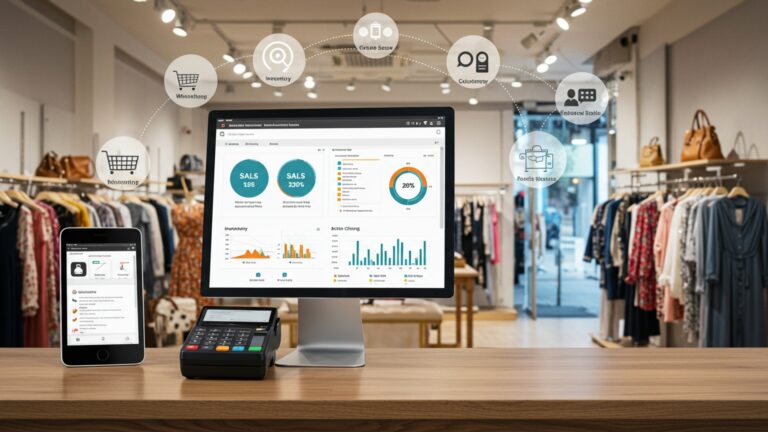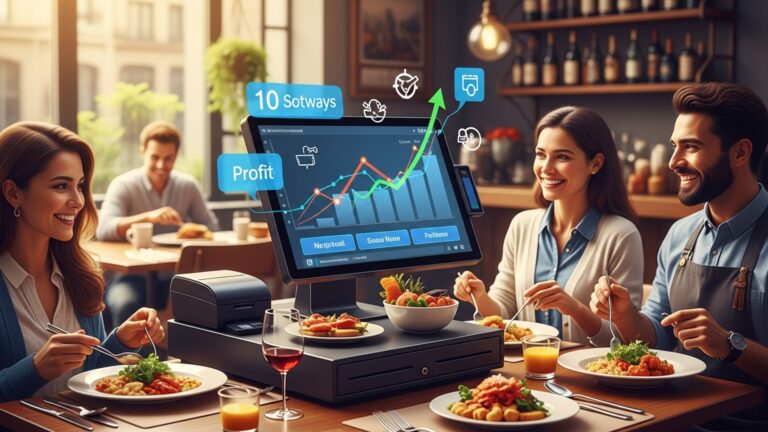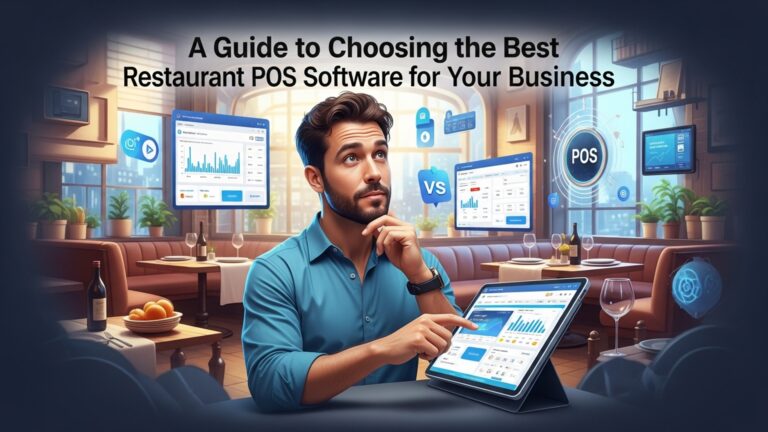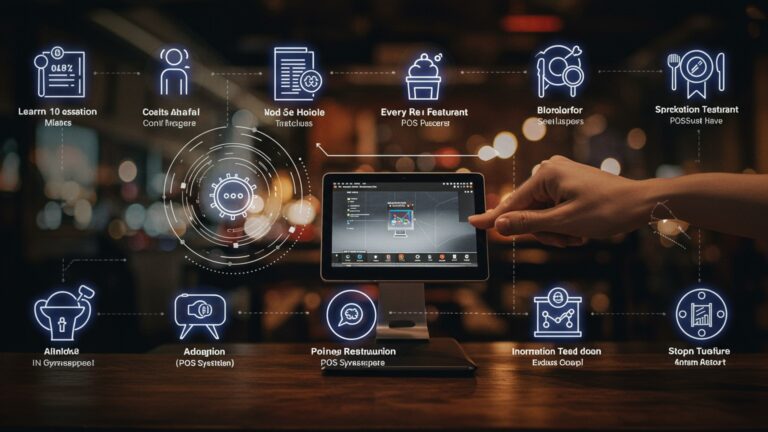Discover 7 Essential Features Your Pharmacy POS System Must Include
In today’s rapidly evolving healthcare landscape, a mere transactional system no longer suffices for pharmacies. A robust pharmacy POS system is now the cornerstone of operational excellence, moving beyond simple sales to integrate critical functions like real-time prescription verification and HIPAA-compliant patient data management. Modern pharmacies face increasing demands for efficiency and compliance, from managing intricate insurance claims processing to ensuring accurate inventory for controlled substances. The right system empowers pharmacies to streamline workflows, enhance patient safety through features like medication interaction alerts. leverage data analytics for improved personalized care, ultimately defining their competitive edge in a digital-first environment.
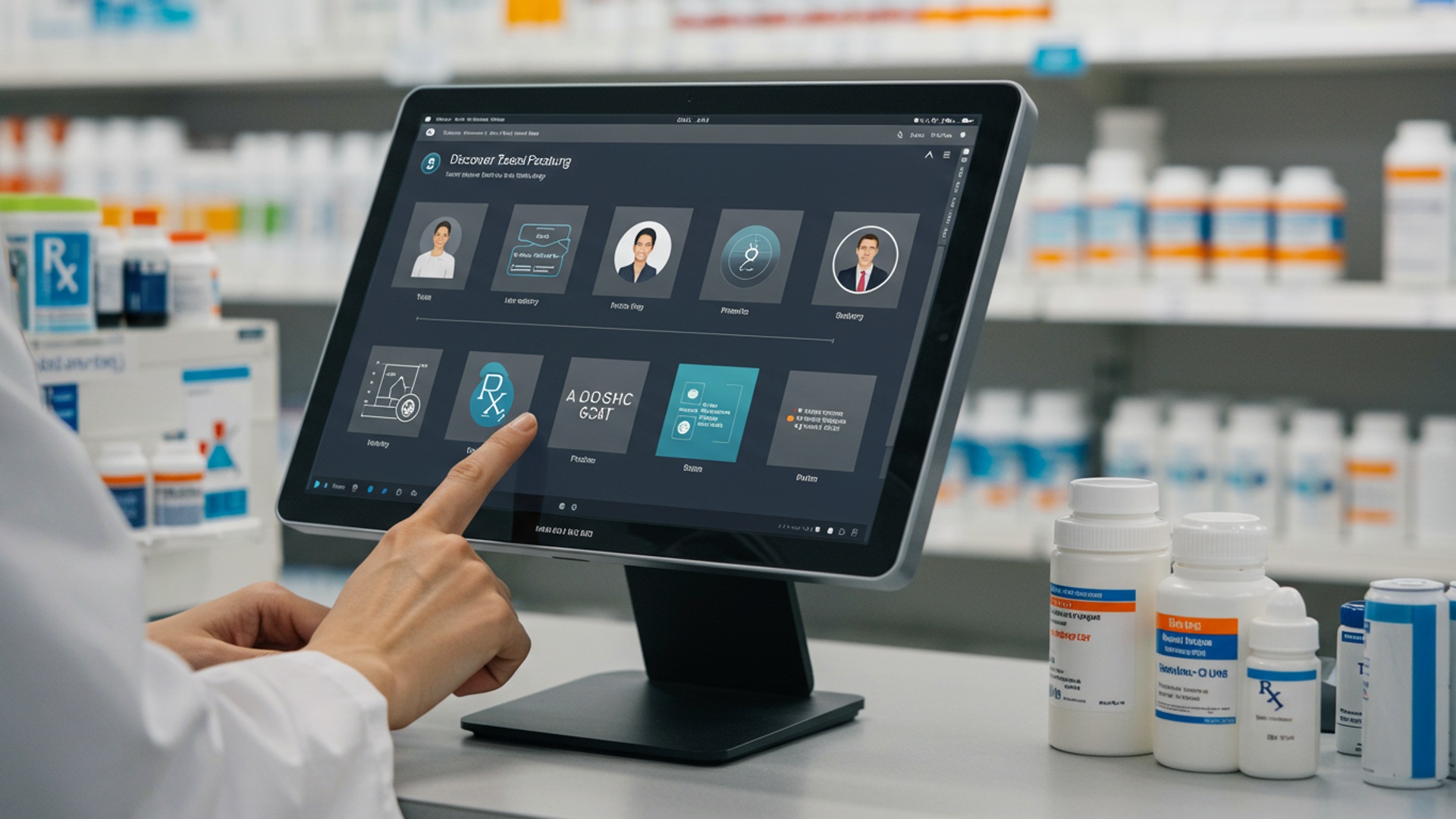
Seamless Prescription Management Integration
At the heart of every successful modern pharmacy lies the efficient and accurate management of prescriptions. A top-tier pharmacy POS system must offer robust integration with your existing prescription management software, electronic health records (EHR). e-prescribing platforms. This isn’t just about convenience; it’s about patient safety, compliance. operational fluidity.
What this means:
- Direct Data Flow: When a prescription is entered into your dispensing system or received electronically, the pharmacy POS system should automatically pull relevant patient and medication details. This eliminates the need for manual re-entry, drastically reducing the potential for human error and saving valuable time.
- Real-time Verification: Integration allows for instant verification of patient insurance, eligibility. even medication history directly at the point of sale. This ensures correct co-pays are charged and potential drug interactions or allergies are flagged before dispensing.
- Refill Management: An integrated system can track refill authorizations, send automated reminders to patients. streamline the refill process, improving medication adherence and patient satisfaction.
Real-world Application: Consider a busy Monday morning. A patient arrives to pick up a new prescription. With a fully integrated pharmacy POS system, the cashier scans the prescription. all relevant details – patient name, medication, dosage, insurance co-pay. even counseling notes – immediately appear on the screen. The transaction is swift, accurate. secure, ensuring the patient gets their medication without unnecessary delays. the pharmacy maintains a high level of accuracy and compliance.
Advanced Inventory Management Capabilities
For a pharmacy, inventory isn’t just stock; it’s a critical asset that requires meticulous control. An essential feature of any effective pharmacy POS system is its sophisticated inventory management module. This goes far beyond simply tracking what’s on the shelf.
Key Components:
- Batch and Expiry Date Tracking: Medications have strict expiry dates and often come in specific batches. Your pharmacy POS system must be able to track each item by its batch number and expiration date, enabling “first-in, first-out” (FIFO) practices and preventing the sale of expired products. This is crucial for patient safety and regulatory compliance.
- Automated Reorder Points: Set minimum stock levels for each product. When inventory drops below this threshold, the system should automatically trigger a reorder alert or even generate purchase orders, preventing stockouts of essential medications.
- Vendor Management: Streamline communication and orders with multiple suppliers. The system should track vendor performance, pricing. delivery schedules.
- Multi-Location Support: For pharmacies with multiple branches, the system should offer centralized inventory management, allowing for easy transfers between locations and a consolidated view of stock levels across the entire operation.
- Controlled Substance Tracking: Given the stringent regulations around controlled substances, the pharmacy POS system must provide a robust audit trail, from receipt to dispensing, ensuring compliance with DEA requirements and preventing diversion.
Actionable Takeaway: By leveraging advanced inventory management, pharmacies can significantly reduce waste from expired products, optimize cash flow by not overstocking. ensure critical medications are always available, leading to better patient outcomes and financial efficiency.
Robust HIPAA Compliance and Data Security
In the healthcare sector, data security isn’t merely a feature; it’s a fundamental requirement and a legal obligation. A pharmacy POS system must be built with stringent HIPAA (Health Insurance Portability and Accountability Act) compliance and data security at its core to protect sensitive patient health insights (PHI).
Understanding HIPAA: HIPAA sets national standards for protecting sensitive patient health insights from being disclosed without the patient’s consent or knowledge. Non-compliance can lead to severe penalties, reputational damage. a loss of patient trust.
Essential Security Features:
- Data Encryption: All patient data, including prescription history, personal details. payment data, should be encrypted both in transit and at rest. This protects it from unauthorized access.
- Access Controls and User Permissions: Not all staff members need access to all data. The pharmacy POS system should allow for granular user permissions, ensuring that only authorized personnel can view or modify specific types of insights. This includes strong password policies and multi-factor authentication (MFA).
- Audit Trails: The system must maintain comprehensive audit logs of all activities, tracking who accessed what data, when. from where. This is invaluable for accountability and identifying potential security breaches.
- Secure Payment Processing (PCI DSS): Handling credit card data requires adherence to PCI DSS (Payment Card Industry Data Security Standard) guidelines. Your pharmacy POS system should facilitate secure, tokenized payment processing to protect cardholder data.
- Regular Backups and Disaster Recovery: Automated and secure data backups are crucial. In the event of a system failure or disaster, a robust recovery plan ensures that patient data and operational continuity are quickly restored.
Why it matters: Beyond legal requirements, robust data security builds patient trust. Patients need to feel confident that their most personal health insights is protected. A secure pharmacy POS system is a cornerstone of this trust.
Comprehensive Reporting and Analytics
In today’s competitive landscape, data is power. An advanced pharmacy POS system should provide comprehensive reporting and analytics capabilities that transform raw transaction data into actionable business intelligence. This allows pharmacy owners and managers to make informed decisions that drive growth and efficiency.
Key Reporting Areas:
- Sales Performance: Track sales by product, category, time of day, cashier. even specific promotions. Identify best-selling items, peak transaction times. areas for improvement.
- Inventory Analysis: Generate reports on inventory turnover, dead stock, fast-moving items. profit margins per product. This helps optimize purchasing and pricing strategies.
- Prescription Volume and Trends: assess prescription fill rates, new vs. refill prescriptions. trends in medication usage. This can inform staffing levels and inventory forecasting.
- Pharmacist and Staff Performance: Monitor transaction speed, error rates. other metrics related to staff efficiency and accuracy.
- Financial Reports: Integrate with accounting software to provide detailed financial reports, including profit and loss statements, cash flow. tax-ready data.
Comparison: Manual vs. Automated Reporting
| Feature | Manual Reporting (Legacy Systems) | Automated Reporting (Modern Pharmacy POS System) |
|---|---|---|
| Data Collection | Time-consuming, prone to human error, often incomplete. | Automatic and real-time capture of all transaction data. |
| Analysis Depth | Basic summaries, difficult to identify complex trends. | Deep dives into various metrics, customizable reports, predictive analytics. |
| Time Efficiency | Hours or days to compile reports. | Instant generation of detailed reports, dashboards. |
| Accuracy | Varies greatly depending on manual input and calculations. | Highly accurate, based on validated system data. |
| Strategic Insights | Limited, often reactive decisions. | Proactive decision-making, trend identification, performance optimization. |
Actionable Takeaway: With robust reporting, a pharmacy can identify that a specific OTC product sells exceptionally well on weekends, prompting them to create a targeted display. Or, they might discover a dip in refill adherence for a particular medication, allowing them to implement targeted patient outreach programs. This data-driven approach fosters continuous improvement and maximizes profitability.
Integrated Patient Management and CRM
Beyond simply processing transactions, a truly effective pharmacy POS system acts as a central hub for patient care and relationship management. Integrated Patient Management and Customer Relationship Management (CRM) features enable pharmacies to provide personalized care, build loyalty. improve health outcomes.
Core Capabilities:
- Comprehensive Patient Profiles: Store not just basic demographics. also prescription history, known allergies, insurance details, communication preferences. even notes from pharmacist consultations. This provides a holistic view of each patient.
- Medication Adherence Tracking: Monitor refill patterns and identify patients who may be at risk of non-adherence. The system can then facilitate automated reminders or flags for pharmacists to intervene.
- Loyalty Programs and Personalized Offers: Implement and manage loyalty points, discounts. personalized promotions based on a patient’s purchase history. This encourages repeat business and strengthens patient relationships.
- Targeted Communication: Segment patients for targeted health campaigns, flu shot reminders, or educational materials based on their medication profiles or demographics.
- Care Coordination: In some advanced systems, limited integration with other healthcare providers’ systems (with proper consent and security) can facilitate better care coordination.
Real-world Application: A patient with diabetes regularly picks up their medication. The pharmacy POS system tracks their adherence. if a refill is missed, it automatically sends a discreet reminder or alerts the pharmacist to make a follow-up call. Also, the system might identify they frequently purchase diabetic socks and offer a personalized discount on a new brand, enhancing both their health and their customer experience.
Streamlined Insurance Claim Processing and Adjudication
Navigating the complexities of insurance claims is a significant operational challenge for pharmacies. An essential feature of any modern pharmacy POS system is its ability to streamline and automate insurance claim processing and adjudication. This dramatically improves cash flow, reduces administrative burden. minimizes errors.
How it works:
- Real-time Eligibility Checks: Before dispensing, the system can instantly verify a patient’s insurance coverage, co-pay. deductible status directly with the PBM (Pharmacy Benefit Manager) or insurance provider. This prevents claim rejections at the point of sale.
- Electronic Claims Submission: The system automatically formats and submits claims electronically to the relevant PBMs and insurance companies, eliminating manual paperwork and faxing.
- Co-pay Calculation: Based on real-time adjudication, the system accurately calculates the patient’s out-of-pocket cost, ensuring transparency and correct billing.
- Claims Tracking and Management: Monitor the status of submitted claims – approved, denied, or pending. The system should provide tools for easy resubmission of denied claims with corrected insights.
- Reconciliation: Facilitate the reconciliation of payments received from PBMs against submitted claims, ensuring all reimbursements are accounted for.
Case Study Snippet: A small independent pharmacy previously spent hours each week manually processing rejected claims and calling insurance companies. After implementing a pharmacy POS system with robust claims adjudication, they saw a 40% reduction in claim rejections and a 25% faster reimbursement cycle, significantly improving their financial health and allowing staff to focus more on patient care rather than administrative tasks.
Robust Core Point-of-Sale Functionality
While specialized features are crucial for a pharmacy, the foundational point-of-sale functionality must be exceptionally robust, efficient. tailored to the unique demands of a pharmacy environment. This is where the daily transactions happen. smooth operation is paramount for customer satisfaction and operational speed.
Core POS Features for a Pharmacy:
- Fast and Accurate Barcode Scanning: Efficiently scan prescription labels, OTC products. other merchandise. The system should instantly retrieve product data and pricing.
- Multiple Payment Options: Support a wide range of payment methods, including cash, credit/debit cards (chip & PIN, contactless), mobile payments (Apple Pay, Google Pay), FSA (Flexible Spending Account) and HSA (Health Savings Account) cards.
- Integrated Prescription Pickup Workflow: A seamless workflow for verifying patient identity (e. g. , signature capture, ID scan) and linking dispensed prescriptions to the POS transaction. This ensures the right medication goes to the right patient.
- Returns, Exchanges. Voids: Easily process returns and exchanges with clear audit trails. the ability to void transactions when necessary.
- Cashier Management: Tools for managing cash drawers, performing end-of-day reconciliation. tracking individual cashier performance.
- Promotions and Discounts: Ability to apply various discounts, coupons. manage loyalty points directly at the point of sale.
- Signature Capture: Essential for prescription pickups, credit card transactions. acknowledging HIPAA privacy notices. This provides a digital record, reducing paper clutter.
Why it’s essential: The checkout experience is often the last interaction a patient has with your pharmacy. A fast, accurate. user-friendly pharmacy POS system ensures a positive experience, reduces wait times. reflects positively on the pharmacy’s professionalism and efficiency. For the staff, it means fewer errors, less stress. more time to engage with patients on a personal level.
Conclusion
Selecting a pharmacy POS system isn’t merely about processing transactions; it’s a strategic investment in patient safety, operational efficiency. your business’s future. By integrating essential features like robust inventory management that proactively flags expired medications, or seamless prescription processing linked to patient profiles, you elevate your pharmacy’s standard of care. From my discussions with pharmacists, the biggest regret is often settling for a system that almost fits, leading to frustrating workarounds and lost time. Embrace modern solutions, particularly cloud-based systems, which offer real-time data insights and remote access – a game-changer for proactive decision-making in today’s fast-paced healthcare environment. Your actionable next step is clear: critically assess your current setup against these identified essentials. Don’t be afraid to demand comprehensive demos and ask vendors how their system directly addresses your unique pharmacy challenges, not just generic retail needs. Investing wisely now empowers you to streamline operations, enhance patient trust. truly thrive in a competitive market.
More Articles
Learn How 7 Top Pharmacy POS System Benefits Boost Your Business
Discover 8 Essential Tips for Optimizing Pharmacy Billing Software Use
How to Select and Implement POS Software A Comprehensive Guide for Business Success
Mastering Cloud Based POS Software How to Boost Your Business Efficiency
Learn How to Maximize Pharmacy Billing Software Efficiency 5 Key Steps
FAQs
Why is robust inventory management crucial for a pharmacy POS system?
A top-notch pharmacy POS needs to track everything from prescription drugs and OTC items to controlled substances. This ensures you always have stock, prevent waste. comply with regulations, helping you serve patients efficiently.
How does a POS system help with prescription processing?
It should integrate seamlessly with e-prescribing platforms, manage refills. link prescriptions directly to patient profiles. This speeds up dispensing, reduces errors. improves patient safety.
What kind of patient data should my pharmacy POS be able to handle?
Your system needs to securely store patient profiles, insurance insights, allergy alerts, medication histories. preferences. This allows for personalized care and efficient service, all while staying HIPAA compliant.
Can a pharmacy POS really help me comprehend my business performance better?
Absolutely! Essential POS systems offer powerful reporting and analytics. You can track sales trends, identify best-selling products, monitor staff performance. gain insights to make smarter business decisions and boost profitability.
What are the non-negotiable security and compliance features for a pharmacy POS?
Security is paramount. Your system must be HIPAA compliant for patient data protection, include robust tracking for controlled substances. ensure secure payment processing (PCI DSS). These features protect both your patients and your business.
What payment methods should a modern pharmacy POS system support?
A good system needs to handle all common payment types: credit/debit cards (EMV chip readers are a must), contactless payments (like Apple Pay/Google Pay). HSA/FSA cards. This offers convenience for your customers.
Is it vital for the POS to grow with my pharmacy?
Yes, definitely! Look for a scalable system that can accommodate future growth, whether you add new services, increase patient volume, or even open new locations. You don’t want to outgrow your technology too quickly.

